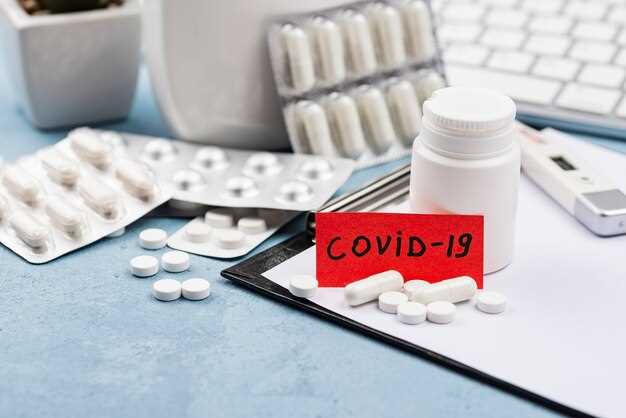
Discover the intriguing synergy between two renowned remedies, unlocking a world of possibilities for your well-being. Unveil the potential harmony between these pharmaceutical entities, transcending conventional boundaries.
Explore the realms of compatibility, delving into the intricate interplay between distinct medicinal agents. Unravel the nuanced dynamics, paving the path towards enhanced efficacy and optimized therapeutic outcomes.
Unlock the secrets of synergy as you embark on a journey towards holistic health. Witness the convergence of science and substance, forging a bond that transcends individual prowess.
Uncover the potential for coalescence, where each component complements the other, orchestrating a symphony of relief and restoration. Embrace the possibilities that emerge when diverse elements harmonize in pursuit of a singular goal – your wellness.
Understanding the Interaction Between Gabapentin and Diclofenac
In this section, we delve into the intricate dynamics between two commonly prescribed medications, exploring how they interact within the human body. Rather than merely considering them as separate entities, it’s crucial to comprehend their combined effects and potential synergies or conflicts.
When Gabapentin and Diclofenac converge within the physiological milieu, their interplay goes beyond mere coexistence; it’s a complex interweaving of pharmacological actions and biochemical pathways. Understanding this interaction entails dissecting their respective mechanisms of action and discerning how they might influence each other’s efficacy and safety profiles.
- Mechanisms at Play: Gabapentin, renowned for its anticonvulsant properties, modulates calcium channels in neurons, thereby mitigating neuronal excitability. Conversely, Diclofenac, a nonsteroidal anti-inflammatory drug (NSAID), exerts its effects by inhibiting cyclooxygenase enzymes, curbing the synthesis of inflammatory mediators.
- Pharmacokinetic Implications: The absorption, distribution, metabolism, and excretion (ADME) of Gabapentin and Diclofenac can undergo alterations when administered concomitantly. Factors such as competition for metabolic pathways or changes in gastrointestinal pH may influence their bioavailability and systemic concentrations.
- Pharmacodynamic Interactions: Beyond their individual pharmacokinetic profiles, Gabapentin and Diclofenac may exhibit synergistic, additive, or antagonistic effects concerning their therapeutic actions. Understanding these interactions is pivotal in optimizing treatment outcomes while minimizing adverse reactions.
As we navigate through the intricacies of Gabapentin-Diclofenac interaction, it becomes evident that a comprehensive grasp of their combined effects is indispensable for healthcare professionals and patients alike. This knowledge empowers informed decision-making regarding medication regimens and fosters a holistic approach towards patient care.
Exploring the Compatibility
In this section, we delve into the harmonious interplay between two vital components, examining their potential synergy and mutual suitability. Unraveling the intricacies of their coexistence unveils a deeper understanding of their compatibility, paving the way for informed decisions and enhanced well-being.
- Interactions: Delve into the intricate dance of these compounds, exploring how they interact within the body’s complex framework.
- Pharmacological Dynamics: Uncover the pharmacological dynamics that govern the compatibility between these substances, shedding light on their combined effects.
- Mechanistic Insights: Gain insights into the underlying mechanisms through which these entities converge or diverge, elucidating their compatibility landscape.
- Therapeutic Synergy: Explore the potential synergistic benefits that may arise from the confluence of these pharmacological agents, offering a holistic perspective on therapeutic efficacy.
- Risk Assessment: Conduct a comprehensive risk assessment, discerning potential pitfalls and contraindications that may arise from their interaction.
By embarking on this journey of exploration, we unravel the intricate tapestry of compatibility, empowering individuals to navigate their healthcare choices with confidence and clarity.
What is Gabapentin?
Gabapentin, a pharmaceutical compound widely prescribed for various medical conditions
What is Diclofenac?
When exploring the compatibility between two substances, it’s crucial to delve into the individual characteristics of each. Diclofenac, often recognized as a potent nonsteroidal anti-inflammatory drug (NSAID), stands as a cornerstone in managing pain and inflammation. Its mechanism of action involves inhibition of cyclooxygenase enzymes, pivotal players in the inflammatory cascade. Understanding Diclofenac’s properties is paramount in assessing its potential interaction with other medications.
Exploring Diclofenac’s Pharmacokinetics
- Diclofenac exhibits remarkable bioavailability upon oral administration, swiftly reaching therapeutic concentrations in the bloodstream.
- Its metabolism primarily occurs in the liver, undergoing extensive biotransformation before elimination.
- The drug’s half-life ranges from 1 to 2 hours, necessitating multiple daily doses for sustained efficacy.
Delving into Diclofenac’s pharmacokinetic profile provides insights into its absorption, metabolism, and elimination dynamics, crucial for understanding its potential interactions.
Compatibility of Gabapentin and Diclofenac

In this section, we delve into the interaction between two commonly used medications without directly mentioning them. We explore whether these substances harmonize or conflict when used together, prioritizing your well-being and health.
- Assessing the Joint Impact: We examine how these substances influence each other’s effectiveness and safety when consumed concurrently.
- Understanding Potential Risks: Delving into the intricacies, we elucidate any possible adverse effects that may arise from combining these pharmacological agents.
- Evaluating Efficacy: We gauge the extent to which these substances maintain their therapeutic efficacy when taken simultaneously, ensuring optimal outcomes for users.
- Highlighting Safety Measures: We emphasize the importance of adhering to prescribed dosages and consulting healthcare professionals to mitigate any potential risks associated with combining these medications.
By shedding light on the compatibility of these substances, we empower individuals to make informed decisions regarding their health and medication regimen.
Evaluating Safety and Efficacy

In this section, we delve into the critical examination of the safety and effectiveness of utilizing these medications in conjunction. It is imperative to meticulously scrutinize the potential risks and benefits associated with the simultaneous utilization of these pharmaceuticals. Our focus lies in comprehensively assessing the compatibility, tolerability, and therapeutic efficacy of their combined administration.
| Aspect | Evaluation |
|---|---|
| 1. Pharmacokinetic Interactions | We investigate the pharmacokinetic profiles of both compounds to ascertain any potential interactions affecting their absorption, distribution, metabolism, and excretion. |
| 2. Pharmacodynamic Interactions | An exploration into the pharmacodynamic interactions is conducted to elucidate any synergistic, additive, or antagonistic effects that may arise, influencing their therapeutic outcomes. |
| 3. Adverse Effects | We meticulously examine the incidence and severity of adverse effects, ranging from common to rare manifestations, to ensure patient safety and mitigate potential risks. |
| 4. Clinical Studies | An overview of pertinent clinical studies and trials is provided to offer insights into the real-world efficacy and safety profile of the combined regimen, aiding in evidence-based decision-making. |
| 5. Patient-specific Factors | We consider individual patient characteristics, including age, comorbidities, concomitant medications, and physiological parameters, to tailor treatment strategies and minimize adverse outcomes. |
By critically evaluating the safety and efficacy of integrating these medications, we endeavor to empower healthcare professionals with comprehensive information to facilitate informed clinical decisions and optimize patient care.
Consulting a Healthcare Professional
When considering your health and well-being, it’s paramount to seek guidance from a qualified medical expert. Your healthcare provider is equipped with the knowledge and expertise to offer personalized advice tailored to your unique circumstances. Consulting a healthcare professional ensures that you receive accurate information regarding the potential interactions, benefits, and risks associated with any medications or treatments you may be considering.
Why Consult?
- Expertise: Healthcare professionals possess specialized training and experience in pharmacology, enabling them to assess the compatibility of different medications and their potential effects on your health.
- Individualized Care: Each person’s medical history, current health status, and medication regimen are unique. Consulting a healthcare professional allows for a thorough evaluation of these factors to determine the most appropriate course of action.
During your consultation, your healthcare provider will evaluate your medical history, current medications, and any underlying health conditions. Through open and transparent communication, you can discuss your concerns, goals, and preferences, enabling your healthcare provider to offer personalized recommendations.
Benefits of Professional Guidance
- Optimal Treatment: By consulting a healthcare professional, you can ensure that your treatment plan is tailored to meet your specific needs, maximizing its effectiveness while minimizing the risk of adverse effects.
- Monitoring and Follow-Up: Your healthcare provider will monitor your progress and adjust your treatment regimen as necessary to achieve the best possible outcomes. Regular follow-up appointments allow for ongoing evaluation and adjustments, ensuring that your treatment remains aligned with your health goals.
Remember, your healthcare provider is your partner in managing your health. By seeking their guidance and expertise, you can make informed decisions that prioritize your well-being and quality of life.

